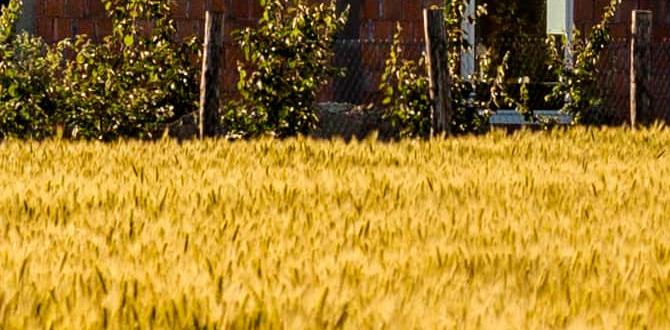Planning a Baja California road trip shouldn’t be stressful. This essential base guide provides simple, practical advice for a comfortable, fun, and worry-free adventure down the Baja Peninsula, covering everything from planning your route to packing like a pro.
Dreaming of sun-drenched beaches, vibrant culture, and endless desert landscapes? A Baja California road trip offers all this and more! Navigating a new destination can feel a bit overwhelming, especially when it comes to the practicalities. Will you know where to stay? What to pack? How to handle unexpected needs? Don’t let those worries dim your travel excitement. We’re here to break down everything you need for a smooth and enjoyable journey. Get ready to discover the magic of Baja with confidence, thanks to this easy-to-follow guide.
Your Baja California Road Trip: The Ultimate Base Guide
Embarking on a Baja California road trip is an unforgettable experience. Imagine cruising down the peninsula, with the vast Pacific Ocean on one side and the rugged desert stretching out on the other. It’s a journey that offers incredible diversity, from charming colonial towns and lively surf spots to serene natural reserves and breathtaking coastlines. As your guide from Journey Essentials, I’m here to make sure your adventure is as comfortable and stress-free as possible. We’ll cover the essentials, from understanding the best times to go and planning your route to packing smartly and ensuring you have everything you need for a seamless trip, no matter your travel style.
Why a “Base Guide” is Crucial for Baja
A “Base Guide” isn’t just about knowing where to sleep; it’s about building a foundation of confidence for your trip. For a place like Baja California, which offers so much variety, having a solid understanding of the basics can make all the difference. It helps you anticipate needs, pack appropriately, and feel prepared for anything the road might bring. Whether you’re traveling solo, with family, or need solutions for personal comfort, like managing incontinence, a well-prepared base means you can focus on enjoying the journey. We want you to feel empowered, not overwhelmed, by the planning process.
When to Visit Baja California
Choosing the right time to visit can significantly impact your Baja California road trip experience. Each season offers a different flavor of this diverse peninsula.
Prime Seasons and Considerations:
- Winter (December to April): This is often considered the most popular time to visit. The weather is typically mild and pleasant, with cooler temperatures perfect for exploring. Whale watching season is in full swing, especially in areas like Magdalena Bay and the waters off Loreto and San Ignacio. However, this is also peak tourist season, so expect more crowds and potentially higher prices.
- Spring (May to June): As winter fades, temperatures start to rise, but it’s generally still very comfortable for travel. It’s a great time for outdoor activities before the heat of summer truly sets in. The crowds begin to thin out after spring break.
- Summer (July to September): This is the hottest period, especially in the inland desert areas. Coastal regions can still be enjoyable, but expect high humidity and temperatures. This is also the “monsoon” season, which can bring occasional rain showers, though often these are short-lived and can bring a welcome refresh to the landscape. It’s a good time for budget travelers as prices are lower and crowds are minimal.
- Fall (October to November): The weather begins to cool down, offering comfortable temperatures and sunny skies. It’s a beautiful time to visit, as the intense summer heat subsides. This period is ideal for those who want pleasant weather without the peak season crowds.
For those who are sensitive to heat or prefer cooler conditions, the winter and spring months are your best bet. If you’re looking for fewer crowds and don’t mind warmer weather, summer and fall can be fantastic alternatives. Always check local weather forecasts closer to your travel dates.
Planning Your Baja California Road Trip Route
Baja California stretches over 775 miles, so deciding on your route is key. Do you want to explore the entire peninsula, or focus on a specific region? Consider your interests: surfing, whale watching, historical sites, or secluded beaches.
Popular Route Options:
- The “La Paz to Cabo” Classic: This popular route covers the southern tip of Baja California Sur. Starting in La Paz, you can explore the beautiful beaches of Balandra and Tecolote, travel to Todos Santos, a charming artist town, and end in the resorts and vibrant nightlife of Cabo San Lucas. This is a great option for a shorter trip, focusing on stunning coastlines and relaxation.
- The “Peninsula Traverse”: For the more adventurous, this route involves driving the entire length of Baja. You can start from the border town of Tijuana and make your way south, stopping at gems like Ensenada, San Felipe, Guerrero Negro (for whale watching), Mulegé, Loreto, La Paz, and finally reaching Cabo. This trip requires more time, ideally 2-3 weeks or more.
- Cultural Immersion through Mission Towns: Baja California is dotted with historic Spanish missions. A route focusing on these sites, such as the Misión de San Ignacio, Misión de San Javier, and Misión de La Purísima Concepción, combined with exploring charming towns like Comondú, offers a deeper dive into the region’s history and culture.
Key Considerations for Route Planning:
- Time: How many days or weeks do you have?
- Interests: What do you want to see and do? (Beaches, adventure, culture, wildlife)
- Pace: Do you prefer a fast-paced trip or a more relaxed pace?
- Accommodation: Will you be camping, staying in budget hotels, or opting for resorts?
A great resource for understanding the vastness and points of interest along the peninsula is the Mexican Light Baja California website, which offers detailed maps and information on various destinations.
Essential Packing List for Your Baja Adventure
Packing light is always the goal, but for a diverse climate like Baja’s, being prepared is key. Think layers, sun protection, and essentials for comfort and convenience.
Clothing Essentials:
- Lightweight, breathable clothing (cotton, linen, moisture-wicking fabrics)
- T-shirts and tank tops
- Long-sleeved shirts (for sun protection and cooler evenings)
- Shorts and comfortable pants/leggings
- Swimsuits (multiple if you plan to swim often)
- A light jacket or fleece for cooler mornings/evenings
- A waterproof or water-resistant jacket (especially if traveling during the rainy season)
- Comfortable walking shoes or sturdy sandals
- Flip-flops or beach sandals
- A wide-brimmed hat or cap for sun protection
- Sunglasses
Health, Safety, and Personal Care:
- Sunscreen (high SPF, reef-safe if possible)
- Insect repellent
- Hand sanitizer
- Personal medications (ensure you have enough for the entire trip)
- A basic first-aid kit (band-aids, antiseptic wipes, pain relievers, motion sickness medication)
- Travel-sized toiletries
- For those managing bladder leakage: discreet and comfortable adult diapers or protective underwear are essential for peace of mind. Brands like Tena, Depend, or Abena offer absorbent and breathable options suitable for travel, ensuring you stay dry and confident whether you’re driving long distances or exploring new towns.
- For parents traveling with young children: child diapers, wipes, and diaper rash cream are non-negotiable. Consider overnight pull-ups for extra protection during car naps or if dealing with unfamiliar sleeping arrangements.
- Small towel (quick-drying travel towels are excellent)
Documents and Finances:
- Passport and visa (if applicable)
- Driver’s license
- Vehicle registration and insurance (ensure your insurance covers Mexico)
- Copies of all important documents (stored separately or digitally)
- Credit cards and debit cards (inform your bank of your travel dates)
- Some Mexican Pesos in cash for smaller purchases or places that don’t accept cards
Electronics and Gadgets:
- Mobile phone and charger
- Portable power bank (a lifesaver for long drives)
- Camera and accessories
- GPS device or reliable navigation app on your phone (download offline maps)
- Car chargers
- Entertainment for the road (music, podcasts, audiobooks)
Miscellaneous but Important:
- Reusable water bottle
- Small backpack or daypack for day trips
- Snacks for the road (non-perishable items are best)
- Book or e-reader
- Headphones
- Basic Spanish phrasebook or translation app
- Toilet paper (surprisingly useful in some remote areas!)
Driving in Baja California: Tips for a Smooth Ride
Driving yourself is one of the best ways to experience the freedom of Baja. However, a few tips can make the experience much smoother.
Navigating the Roads:
- Road Conditions: Major highways (like Mexico Federal Highway 1) are generally well-maintained. However, some secondary roads can be rough or unpaved, especially leading to more remote beaches. Always drive with caution and be prepared for potholes.
- Speed Limits: Pay attention to speed limits, which are posted in kilometers per hour. They can vary significantly, and Mexican authorities do enforce them.
- “Topes” (Speed Bumps): Be extremely vigilant for “topes.” These are ubiquitous speed bumps, often unmarked and quite severe. Look for signs indicating their presence and slow down considerably.
- Daylight Driving: It’s highly recommended to do most of your driving during daylight hours. Roads can be poorly lit at night, and it’s harder to spot hazards like animals or uneven pavement.
- Gas Stations: Gas stations (Pemex) are generally reliable along the main highways. It’s a good idea to fill up whenever you see a station, especially when heading into more remote areas, as they can be spaced far apart. You’ll usually pay inside or at a designated kiosk.
- Navigation: While GPS and apps like Google Maps are useful, it’s wise to have a good paper map as a backup. Download offline maps of your route before you leave, as cell service can be spotty.
Vehicle Preparedness:
- Tires: Ensure your tires are in excellent condition, properly inflated, and consider a spare tire that is also in good shape.
- Vehicle Check: Before your trip, have your car thoroughly checked by a mechanic: oil, fluids, brakes, battery, etc.
- Insurance: Mexican auto insurance is mandatory and not typically covered by your U.S. or Canadian policy. Purchase it before you arrive or from reputable dealers at the border. The U.S. Department of State provides guidance on traveling to Mexico, including requirements for foreign travelers and their vehicles. You can find important travel information for Mexico here.
Accommodation Options in Baja California
From rustic campsites to luxury resorts, Baja California offers a wide range of places to rest your head.
Types of Accommodation:
- Camping: Many beaches and desert areas offer picturesque camping spots. Some are primitive, while others have basic facilities. It’s a fantastic way to immerse yourself in nature and enjoy the starry Baja nights. Be sure to check local regulations and consider “rancho camping” where private land is opened for campers.
- Budget Hotels and Motels: Found in towns and cities across Baja, these offer basic amenities at affordable prices. Look for positively reviewed “hoteles” or “moteles.”
- Mid-Range Hotels: These offer more comfort and amenities, often including pools, restaurants, and better-appointed rooms.
- Boutique Hotels and Inns: Many charming towns, like Todos Santos and Loreto, boast beautiful boutique hotels that offer a unique local experience.
- Resorts: The southern tip, especially Cabo San Lucas and San José del Cabo, is famous for its upscale resorts catering to various budgets.
- Vacation Rentals (Airbnb/VRBO): These are increasingly popular and can offer great value, especially for families or longer stays, providing the convenience of a kitchen and more space.
Booking Tips:
- Book in Advance: Especially during peak season or for popular locations, book your accommodation well ahead of time.
- Read Reviews: Always check recent reviews to get a feel for the current state and quality of the accommodation.
- Location: Consider where you want to be. Do you want to be in the heart of a town, directly on the beach, or somewhere more secluded?
Food and Drink: Savoring Baja’s Flavors
Baja California is a culinary paradise, famous for its fresh seafood and distinct flavors. Don’t miss out on the local delicacies!
Must-Try Experiences:
- Fish Tacos: Baja is the birthplace of the fish taco! Look for “pescado frito” (fried fish) or “pescado a la plancha” (grilled fish) tacos from local stands (“taquerías”) for an authentic taste.
- Ceviche: Freshly prepared ceviche, made with lime-marinated fish or shrimp, is a refreshing delight, especially on a hot day.
- Seafood: From clamato preparations to whole grilled fish, the seafood is exceptional here. Lobster, shrimp, scallops, and an array of fish are staples.
- Local Produce: Enjoy fresh fruits like mangoes, papayas, and dates (especially in the central desert regions).
- Margaritas and Local Beer: A cold margarita or a cerveza (beer) is the perfect accompaniment to a Baja meal.
Safety and Hydration:
- Drink Bottled Water: It’s generally advised to drink only bottled water. Tap water can be safe in some tourist areas or high-end establishments, but it’s better to be cautious. Carry a reusable water bottle and refill it with large jugs of purified water purchased from stores.
- Street Food: While street food can be delicious and authentic, use your best judgment. Look for vendors with clean setups and high turnover, indicating freshness.
- Restaurants: “Mariscos” (seafood) restaurants are abundant and usually offer high-quality, safe options.
Staying Safe and Healthy on Your Trip
Safety and health are paramount for any enjoyable trip. Baja is generally safe for travelers, but standard precautions apply.
Key Safety Tips:
- Be Aware of Your Surroundings: Like any travel destination, be mindful of your belongings, especially in crowded areas or markets. Don’t flash large amounts of cash or expensive jewelry.
- Secure Your Vehicle: Always lock your car and never leave valuables visible inside. Parking in well-lit areas or paid lots is advisable.
- Respect the Ocean: Be aware of ocean conditions. Riptides can be dangerous on certain beaches. Pay attention to any warning flags or local advice.
- Wildlife: Keep a safe distance from wildlife.
- Emergency Numbers: Know the local emergency number, which is typically 911 in Mexico.
Health Considerations:
- Sun Protection: The Baja sun is strong. Use sunscreen, wear protective clothing, and stay hydrated to prevent sunburn and heatstroke.
- Traveler’s Diarrhea: To minimize the risk, stick to bottled water, well-cooked foods, and avoid raw fruits and vegetables that you haven’t peeled yourself. Carry medication for digestive upset.
- Personal Comfort and Incontinence Management: For individuals who need to manage incontinence while traveling, preparedness is key. Ensure you have a sufficient supply of adult diapers, protective underwear, or other necessary supplies. Knowing that comfortable, reliable adult incontinence products are available can significantly reduce anxiety. Brands offer discreet options designed for active lifestyles, allowing you to enjoy your road trip without worry. For parents, ensuring easy access to child diapers and changing supplies will make travel with little ones much more manageable.
- Travel Insurance: Consider purchasing comprehensive travel insurance that covers medical emergencies, trip cancellations, and lost luggage.
Making the Most of Your Baja California Road Trip
A Baja California road trip is an adventure for the senses. By planning ahead with this essential base guide, you’re setting yourself up for a journey filled with stunning scenery, delicious food, and unforgettable moments. Remember to be flexible, embrace the unexpected, and most importantly, enjoy the freedom of the open road.
Baja Road Trip FAQ
Q1: Is it safe to drive in Baja California?
Yes, driving in Baja California is generally safe, especially along the main highways. Always practice defensive driving, be aware of road conditions (especially “topes” or speed bumps), and it’s highly recommended to drive only during daylight hours. Ensure your vehicle is in good condition and you have proper Mexican auto insurance.
Q2: What is the best time of year for a Baja California road trip?
The best time generally depends on your preferences. Winter (December to April) offers the most pleasant temperatures and whale watching, but is also the busiest. Spring (May-June) is warm and less crowded. Summer (July-September) is hot but can be good for budget travelers. Fall (October-November) offers a nice





